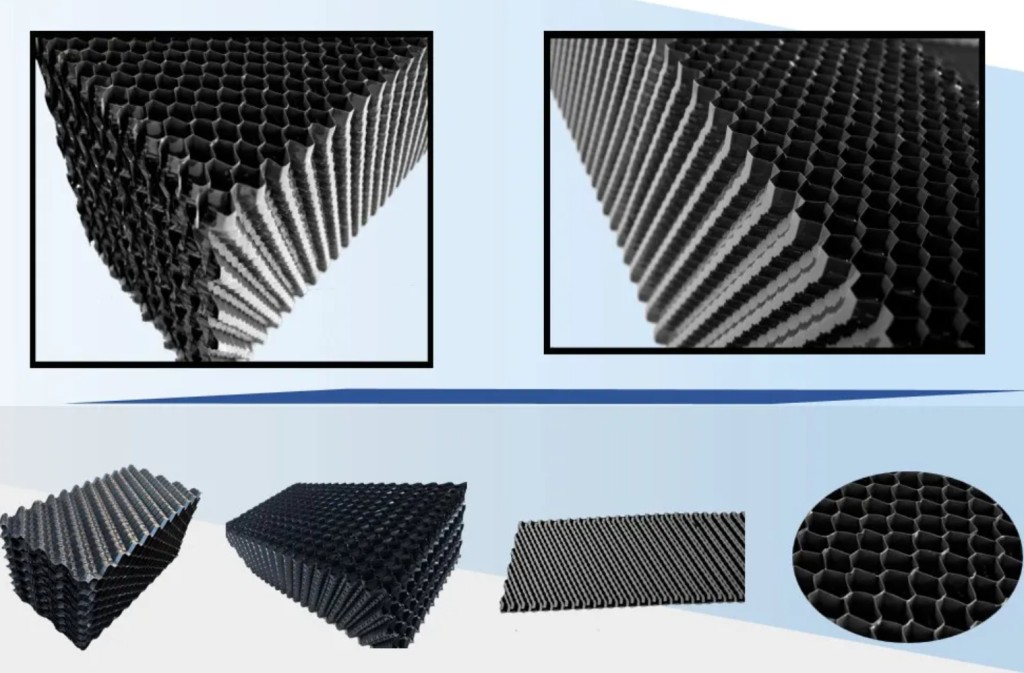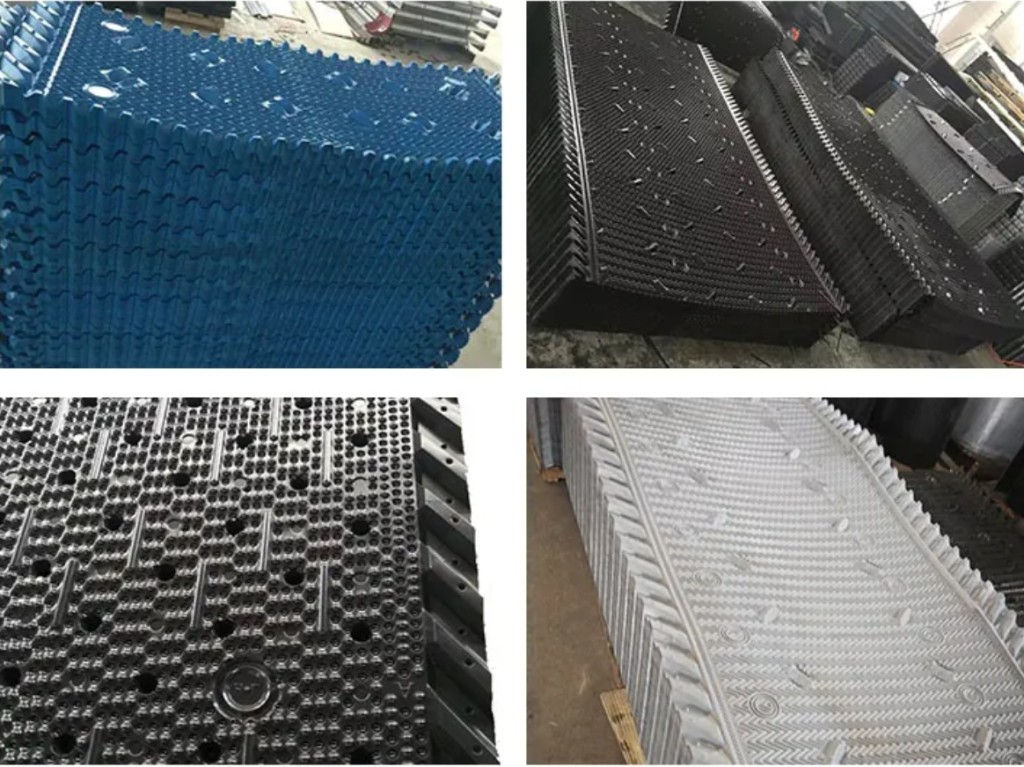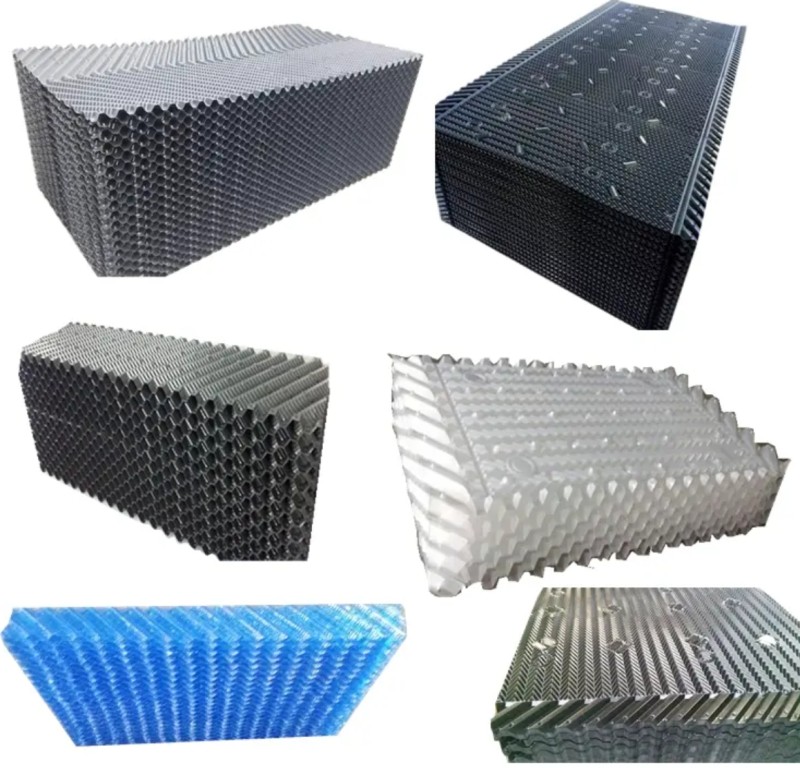In the realm of HVAC (Heating, Ventilation, and Air Conditioning) systems, cooling towers play a pivotal role in heat rejection for large-scale industrial and commercial applications. Among the various components of a cooling tower, two are particularly essential for enhancing performance and efficiency: the drift eliminator and the cooling tower fill. These two components work synergistically to optimize the heat transfer process while minimizing water loss and energy consumption.

Drift Eliminators: Preventing Water Loss and Enhancing Safety
Drift eliminators are specialized devices designed to reduce the amount of water droplets, or "drift," that are carried away by the airflow in cooling towers. Drift is the fine mist of water that escapes from the cooling tower, often resulting in water wastage and potential environmental concerns, such as contamination or moisture damage. The drift eliminator’s primary function is to capture and redirect these droplets back into the cooling tower’s basin, thereby minimizing water loss.
The construction of drift eliminators is typically designed using materials like PVC (Polyvinyl Chloride) or other corrosion-resistant plastics. Their design often consists of a series of angled plates or slats arranged in a way that maximizes airflow while efficiently trapping water droplets. As air flows through the cooling tower, the drift eliminator causes the water droplets to collide with the surface of the plates, effectively trapping them. Larger droplets fall back into the basin, while smaller droplets are directed into a separate collection system for further condensation.
Drift eliminators are essential for maintaining the operational efficiency of a cooling tower. Not only do they reduce water loss, but they also help ensure compliance with environmental regulations that limit the amount of drift allowed to escape into the atmosphere. This makes them a critical component in sustainable cooling tower operations.

Cooling Tower Fill: Maximizing Heat Transfer Efficiency
The cooling tower fill is another crucial component in maximizing the performance of a cooling tower. The primary role of the fill is to increase the surface area within the tower to facilitate heat exchange between the air and water. By providing a greater contact surface, the fill ensures that the heat from the hot water is effectively transferred to the surrounding air as it flows through the tower. This increases the cooling efficiency and helps the system to achieve optimal performance.
Cooling tower fill is typically made of high-strength plastic materials, such as PVC, that can withstand the harsh operating conditions within the tower, including exposure to water, air, and heat. The fill is designed to create a large surface area where water can be distributed as thin films or droplets, allowing the maximum amount of air to come into contact with the water. This process is crucial for enhancing the thermal exchange, leading to more effective cooling of the water used in industrial or commercial applications.
There are two common types of fill designs: film fill and splash fill. Film fill consists of thin sheets of material that direct the water into thin layers, increasing the surface area for heat transfer. Splash fill, on the other hand, is made of larger, thicker pieces that cause the water to "splash" as it falls, again increasing surface area while promoting evaporation. The choice between these two types of fills depends on the specific cooling requirements of the system and the nature of the industrial process being supported.
The Synergy Between Drift Eliminators and Cooling Tower Fill
Although drift eliminators and cooling tower fill are separate components, they work together to ensure the cooling tower’s efficiency and environmental compliance. The cooling tower fill performs the task of enhancing heat transfer, while the drift eliminators prevent water loss through airborne droplets. Together, they make a cooling tower both highly efficient and environmentally responsible.
When the cooling tower operates, hot water from industrial processes is pumped to the top of the tower. Here, the water is evenly distributed across the fill, where it is spread into thin sheets or droplets to maximize surface area and promote heat transfer to the passing air. The warm air rising through the tower picks up the heat, causing the water temperature to drop. However, as air moves through the tower, some of the water can be carried away in the form of fine droplets. This is where the drift eliminator comes in—by capturing and redirecting these droplets back into the tower, it minimizes water loss and ensures that the cooling process is as efficient as possible.
In addition to water conservation, the drift eliminator also contributes to safety. The fine mist that escapes from cooling towers can pose hazards in certain environments, particularly in urban areas where it may carry contaminants. By reducing drift, drift eliminators help minimize the spread of any potential pollutants, contributing to a cleaner and safer environment.

Maintenance Considerations for Drift Eliminators and Cooling Tower Fill
Both drift eliminators and cooling tower fill require regular maintenance to ensure optimal performance. Over time, the components may become clogged with debris, scaling, or biological growth, which can hinder their ability to function effectively. Regular inspection and cleaning are essential to prevent such issues and maintain the overall performance of the cooling tower.
For drift eliminators, maintenance typically involves checking for any physical damage, such as cracks or warping, which could reduce their effectiveness. It is also important to clean the surfaces of the plates or slats to prevent the buildup of dirt or algae, which could disrupt the flow of air and water.
Cooling tower fill requires similar maintenance practices. Over time, the fill can accumulate scale from minerals in the water or biological growth, both of which can reduce the surface area available for heat exchange. Regular cleaning with appropriate chemicals and mechanical scrubbing can help keep the fill in good condition. Additionally, inspection for any physical damage or deterioration is crucial, as damaged fill material can result in poor heat transfer and reduce the cooling tower's efficiency.
Conclusion: Essential Components for Cooling Tower Efficiency
In conclusion, both drift eliminators and cooling tower fill play essential roles in the efficiency and sustainability of cooling towers. Drift eliminators are designed to reduce water loss and prevent airborne contaminants, while the cooling tower fill increases heat transfer efficiency, ensuring that the cooling process is effective and reliable. Together, these components contribute to the overall performance and environmental compliance of HVAC systems, making them indispensable in large-scale cooling applications.
Maintaining these components is key to ensuring the long-term performance of cooling towers. Proper upkeep of both the drift eliminators and cooling tower fill ensures that these systems continue to operate efficiently, conserve water, and minimize environmental impact. As industries continue to grow and demand for energy-efficient systems increases, the importance of optimizing cooling tower design through the effective use of drift eliminators and fill materials will only continue to grow.
Media Contact
Company Name: PingXiang LianChuang Environmental Protection Technology Co.,LTD
Email: Send Email
Address:256 Shiniu Road
City: Lishui City
State: Zhejiang
Country: China
Website: https://www.chemicalpackings.com/article/coolingtowefills.html

